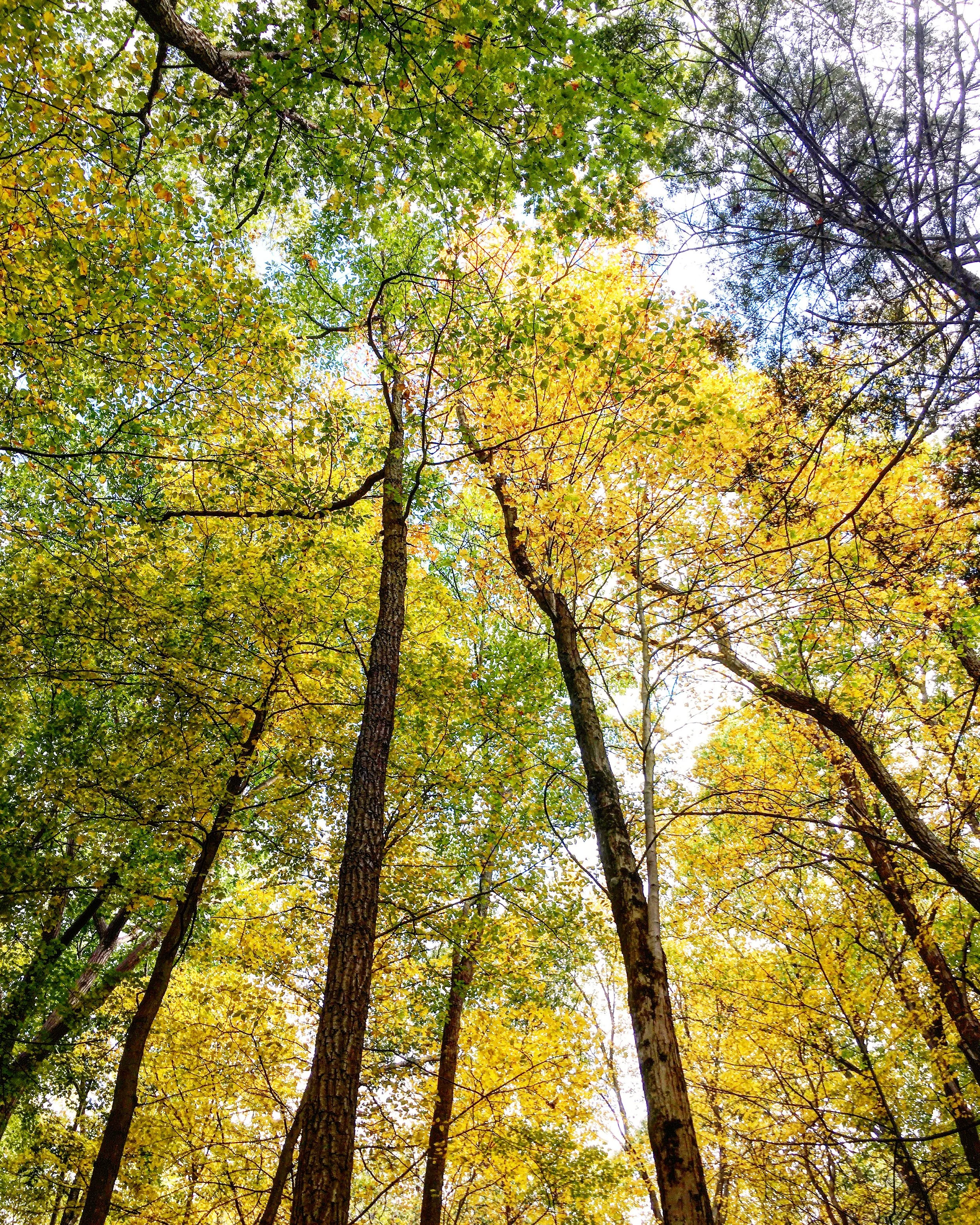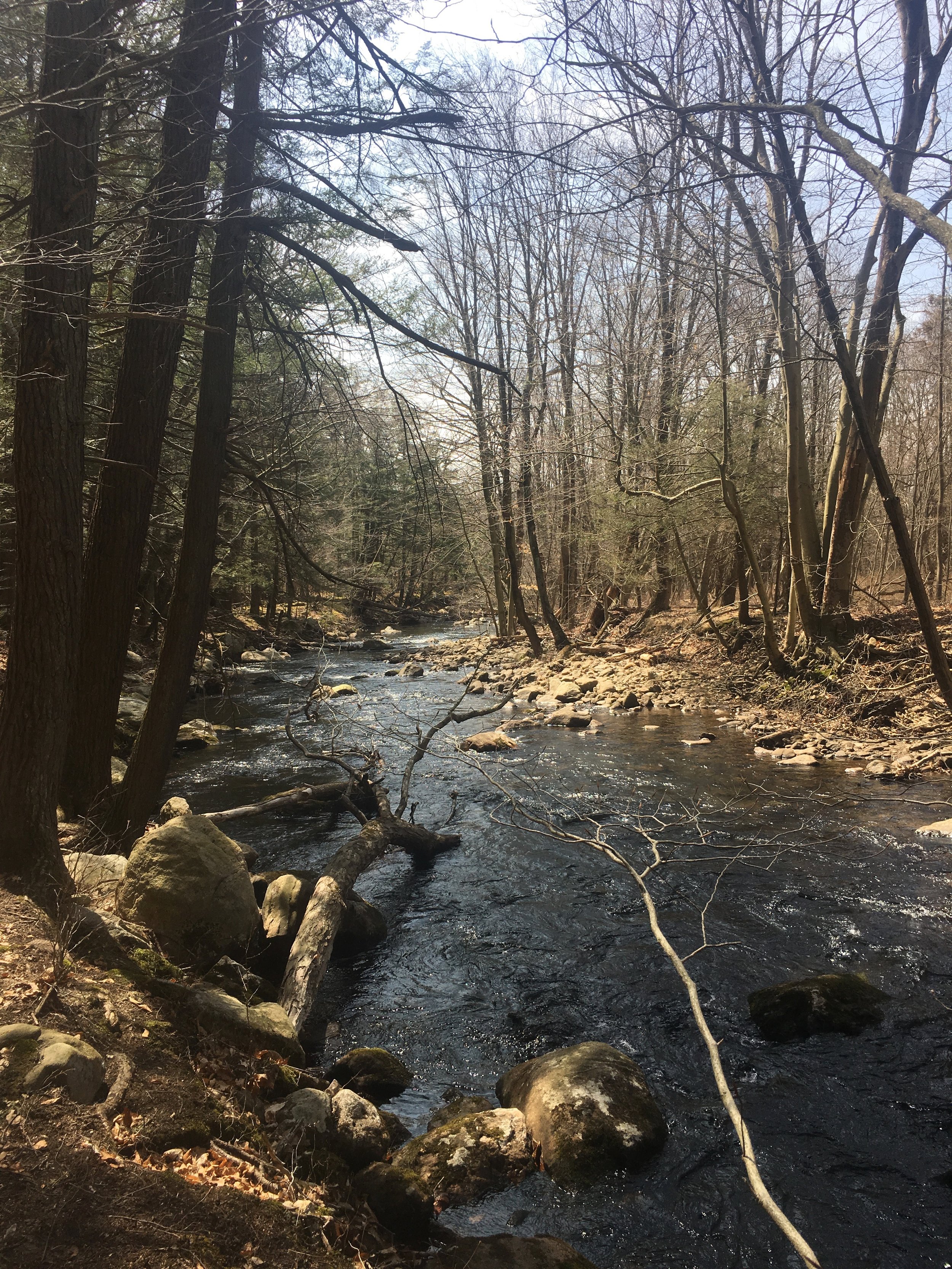Shinrin-Yoku is a Japanese practice that was developed in the 1980’s as a means to get overburdened workers into the outdoors. It translates as “Forest Bathing” or taking in the outdoor atmosphere. Since that time studies have been conducted showing the many health benefits of spending time in nature including lowered blood pressure, increased immunity and decreased levels of the stress hormone cortisol. I recently learned about this practice and have since been incorporating it into my hiking adventures.
I recently hiked to Pine Meadow Lake at Harriman State Park on a solo trek to do Forest Bathing. I am training to be a Forest Therapy Guide and in my studies have learned that the Japanese version of Shinrin-Yoku basically encompasses a childlike appreciation of the forest while opening the five senses and expressing gratitude. The American version takes it a step further by incorporating Mindfulness activities, which have also been shown to reduce stress. So I ventured out to Harriman and channeled my inner child and desire to heal. It differs from hiking in that you focus on BEING in nature rather than trekking through it. It takes patience and imagination.
Each session begins with setting an intention, similar to a yoga class. On this particular day I toyed with a few ideas and settled on wanting to open my heart. So I embarked on my favorite trail that had finally thawed out after winter. First I paid attention to sound and heard the stream and the sound of trees creaking in the wind and the sound of my feet hitting the dirt. I noted the different shades of green in the moss on the rocks and expressed gratitude for spring.
I spotted a fallen tree that once stood mighty and placed my hands on it to commiserate after the rough winter, but also imagined the haven it would become for new life in the forest. If along the path I needed to grab hold of a tree for balance I did so and expressed gratitude out loud for the support. While contemplating opening my heart, if a particular difficult memory or emotion surfaced I would find a solid tree or rock and lean on it and imagine those emotions transferring over for safe keeping. I see these not as literal actions, but symbolic gestures. Either way I do feel relief in doing this as if these objects, which have withstood the elements could bear the burden.
Another element of Shinrin-Yoku is finding a sit spot. I took advantage of sitting on a rock near a stream and eating lunch. Here I practiced a Yoga Nidra meditation where you scan your body using your mind. This is a particularly good exercise for connecting with the body and living in the moment. I paid attention to the connection between my body and the rock on which I sat and the sound of the stream. I felt gratitude for the food I ate and slowed down to actually taste it.
Finally I reached my favorite spot on the trail where the stream turns almost into a waterfall. Here is one of the biggest stones on the trail, and I always stop to lean on this rock. This time I discovered a rock underneath the point where this boulder leaned against another that was perfect to lie on. I crawled inside and imagined the strength of these rocks and meditated focusing only on the in and out of my breath. With the sound of the stream in the background all my worries seemed to fade. When I stood up and walked to the stream I discovered another fallen tree and that it had fallen in such a way that I could hang on it and let my legs dangle like they would when I was a kid.
In Japan, Shinrin-Yoku sessions end with a tea ceremony. A guide would also take your blood pressure at the beginning and end and you could consult with a Dr. in the forest. A session can be anywhere from 2 to 4 hours but they don’t recommend more than that. It is also suggested that you walk no more than ¼ a mile. For most adventure lovers this could seem almost impossible. I have learned to slow down and notice the details and live in the moment. This practice has rolled over into my daily life as I express gratitude for the small pleasures of life.





